Pay cuts, stress levels and ruthless sackings triggering an alarming increase in mental health concerns for AFL coaches
There is a raging river of worrying feedback from coaches since the pandemic turned the AFL upside down. And it has been labelled a wake-up call. See the concerning survey results.
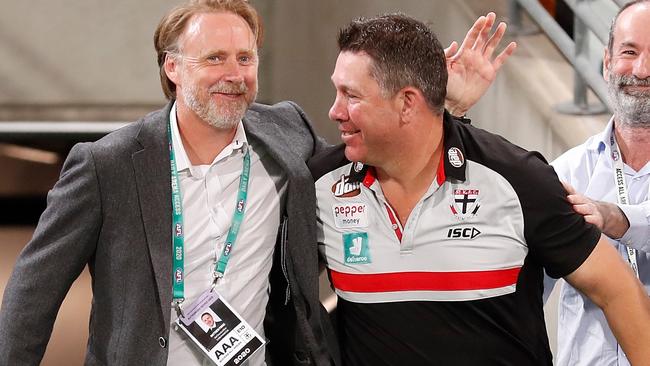
AFL
Don't miss out on the headlines from AFL. Followed categories will be added to My News.
They are footy’s highwire trapeze artists.
Under the brightest spotlights, the AFL’s senior coaches attempt some of the most difficult balancing acts in the game, and every step is intensely scrutinised high up on the trembling wire.
But what AFL Coaches’ Association chief executive Alistair Nicholson has become increasingly concerned about is the shrinking safety net for the men and women spinning the magnets, the soft cap crisis, and the raging river of worrying feedback he has received from them since the pandemic tipped the game upside down.
Over the past 12 months, the game’s players and top-end administrators have all had their salaries restored to pre-Covid levels, as part of the game’s impressive financial recovery.
But one group has missed out.
And they are arguably some of the most visible and most stressed-out cohort in the game.
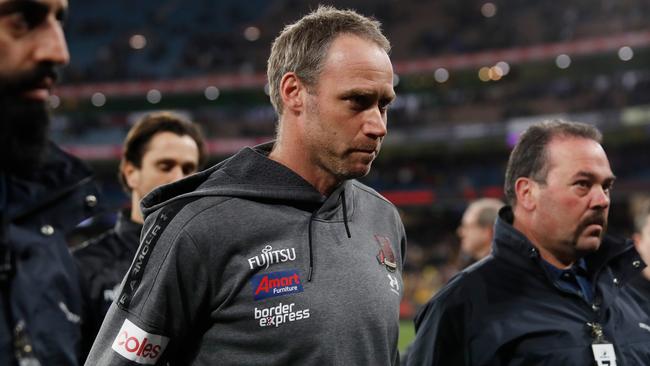
Nicholson has spent the past 12 months trying to delve deep into the issues confronting the game’s coaches, assessing support structures, workloads, pressures, salaries and the mechanisms designed to help protect his members when they fall.
No offence to their replacements, but the removals of Brett Ratten (St Kilda) and Ben Rutten (Essendon) last year, in particular, combined with some alarming wellbeing survey results have been labelled a wake-up call for the whole industry.
Ninety-eight days after he was re-signed for two years, Ratten was removed late last year with a cold-hearted uppercut by St Kilda’s board.
But to be fair, the alarm bells around the coaches have been screaming since COVID-19 hit.
That’s when the soft cap was slashed by 37 per cent, coaches left their families for months at a time to live out of hubs, stress levels and workloads went through the roof, and what they received in return was a huge pay cut.
While the rest of the country largely worked from home in tracksuit pants and Ugg boots, the game’s coaches and players hit the road, leaving their partners (in many cases) to home school and parent their children.
And since then the game’s finances have bounced back strongly, with AFL CEO Gillon McLachlan proudly declaring the game was in rude health only two weeks ago.
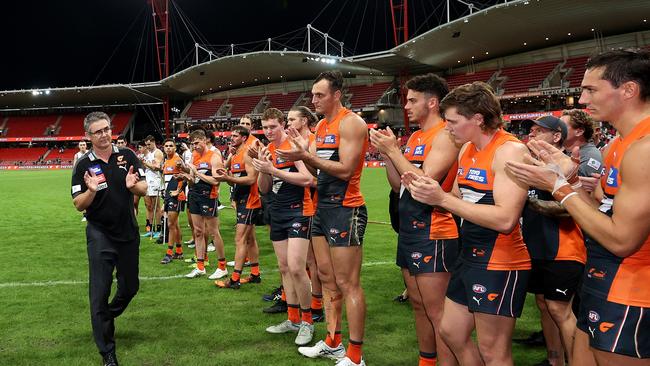
The crowds over the first two rounds (765,789) are the highest in AFL history and the $4.5 billion broadcast rights deal McLachlan signed last year was landmark.
But there is one cohort which has been “completely overlooked”, Nicholson says, in footy’s financial rebound.
And they are men and women who carry arguably the biggest responsibility at each club across the country. The senior, assistant and development coaches.
Said one senior football figure this week, a position in the AFL assistant coaching ranks was “significantly less appealing” than it once was five years ago when jobs in AFL football departments were largely coveted.
Remarkably, the league’s assistant and development coaches are still being paid about $10,000 – $15,000 less per year than what they were earning in 2019, triggering a series of alarming results in the AFL Coaches’ Association’s latest wellbeing survey.
In all, 42 per cent of coaches rated their mental health average or below (poor or very poor), while the percentage of coaches who believe they have an acceptable work-life balance has plummeted from 60 per cent in 2019 to 26 per cent last year.
Only 33 per cent of coaches say they can continue shouldering current workloads (down from 70 per cent), while the number of coaches who rated their wellbeing as poor or very poor has doubled from six per cent to 12 per cent.
That is one or two people at every club, at risk.
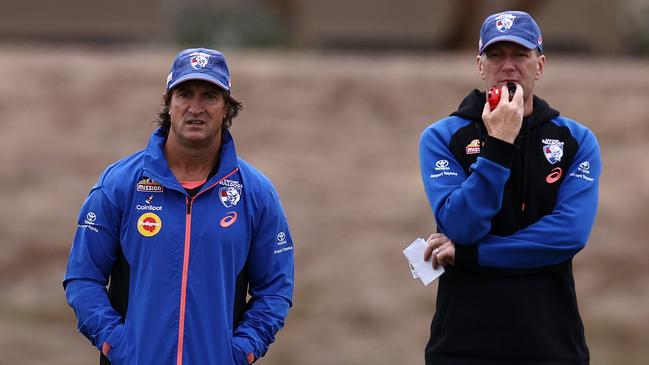
Last year, Western Bulldogs’ coach Luke Beveridge hit out at the league, saying the “wellbeing component’ for coaches had become a “real struggle”, resulting in a “huge issue” behind the scenes.
But the coaching troubles have been snubbed amid the focus on the Tasmania team bid and new stadium arm wrestle, the Hawthorn probe and new player CBA agreements.
Nicholson said these wellbeing problems among the coaching ranks could no longer be ignored in football’s top office.
“My concern is that the people who are soldering on (with mental health or workload problems), they are not necessarily getting any better, in fact the data is getting worse in that regard,” Nicholson said.
“There is more awareness in society about it generally, but we think if your wellbeing is better, you are a better coach.
“So we think ‘lets get this bit right because it will make the game better’ and you can see (Collingwood senior coach) Craig McRae moving into that area.
“But to do that, there are some things that need to be addressed.
“That’s looking at improving termination clauses for coaches and creating better support services because sometimes a coach may have a resource available at the club, but if they are out of contract and they don’t want the club to know, then what?
“Where are they going for that help?
“We need to catch that person in the system. I’m not sure we are doing that as well as we can.”
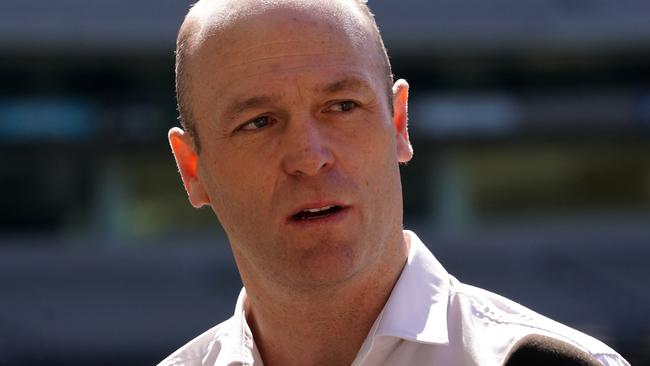
The coaches who rated their mental health as average or below (42 per cent) is roughly double the national average (20 per cent).
And it comes amid some alarming concussion research and the tragic loss of former NRL coach Paul Green to suicide last year.
Nicholson said it was time the game started talking about the health and wellbeing of the coaches more seriously, as well as the lack of job security, the soft cap problems, some marketing allowance scope, and transition fund as part of four-point plan to help support not only the coaches, but help “protect the profession as a whole”.
Is it an appealing job, anymore?
Nicholson said to continue to attract the best coaches in the country and tempt people like Joel Selwood, Jordan Lewis and Scott Pendlebury into the coaches’ box, the soft cap had to be increased, marketing allowances had to be freed-up, and termination clauses had to be lengthened and standardised.
He said coaches should have the capacity to secure structured extra marketing allowances to earn more money outside the salary cap in reward for promoting footy at the elite and grassroots level or certain programs.
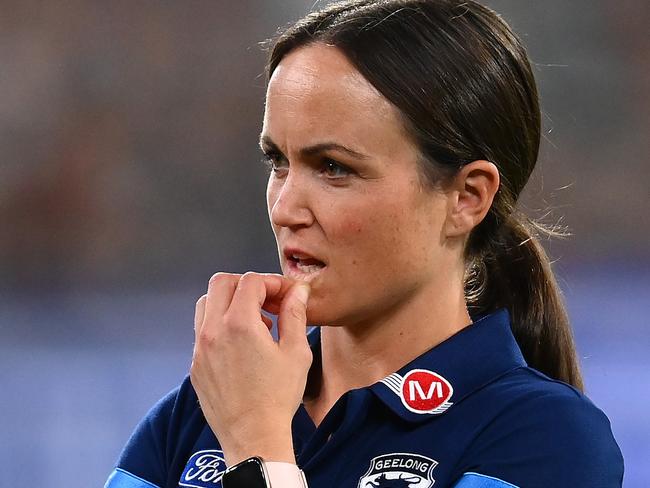
But the main issue was the restrictive soft cap which was slashed from $9.6 million in 2019 to $6.2 million when COVID-19 hit.
It is now at $6.95 million with a $250,000 increase to $7.2 million base in 2024 (excluding $500,000 of allowances), meaning the cap remains 20 per cent down on 2019.
While it serves a clear purpose as an equalisation measure, and some efficiencies inside football departments have been welcomed, Nicholson said it was time to target areas in and outside the cap to provide greater reward for coaches.
It might be the biggest sporting show in the country, but the coaches are still waiting for their lick of the ice cream as part of footy’s bounce back.
Nicholson said the locked-in $250,000 increase to the soft cap next year was clearly “not enough”.
“The biggest challenge with senior coaches is the soft cap and the 37 per cent reduction,” Nicholson said.
“That has come back a bit last year and next year, but that is still going to be 20 to 25 per cent down on what it was.
“So you have got an experienced and successful coaches who are probably not getting rewarded for the amount that they should be based on the peak of their powers.
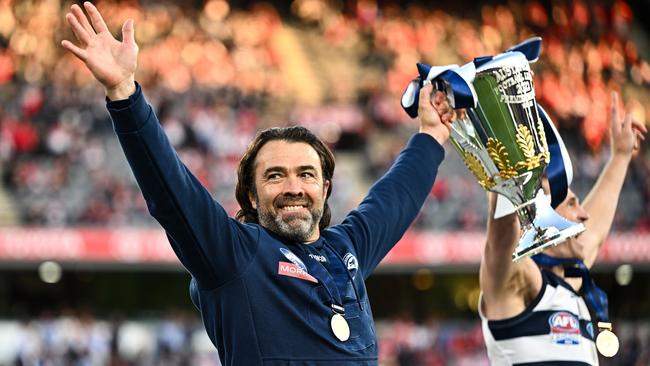
“A senior coach may say ‘I can’t do it without this group’, but if I’m the head coach and basically I’m trying to reward my assistant and development coaches as much as I can.
“But we are stuck within this soft cap at the level at it is.
“Simon Goodwin leads Melbourne to the club’s first flag in 57 years, but the Demon’s coaches aren’t getting their salary doubled, they’re on less money now than what they were on in 2019.
“Geelong’s coaches are the same. I would love their assistants to get more of a bonus, a five, 10 or 15 per cent bonus or whatever it is for winning and rewarding that (premiership) success.”
Nicholson said coaches who leave the game after long careers should have access to money and programs as part of a transition fund, to help improve their prospects as they move into other jobs outside football.
Some men, in particular, have not worked in any industries outside of football after being drafted to a club as a teen, and then moved into coaching.
Green, a former NRL player and coach, took his life aged 49, after living with an undiagnosed case of Chronic Traumatic Encephalopathy.
While the concussion matter is somewhat separate, the AFL CA are mindful of the hardships coaches face.
“It is a real concern and when that tragic event occurred last year, of course, you immediately go to what does that mean for AFL coaches,” he said.
“My guys, and I did have AFL coaches talk about that, we need to get this profession more supported and that’s where I think the AFL Coaches Association has a role, but also the AFL and the clubs also have a role as well.
“There is pressure from media, pressure from supporters and all of that’s part of it, but can we provide a greater safety net around the profession, that is what is so important.”
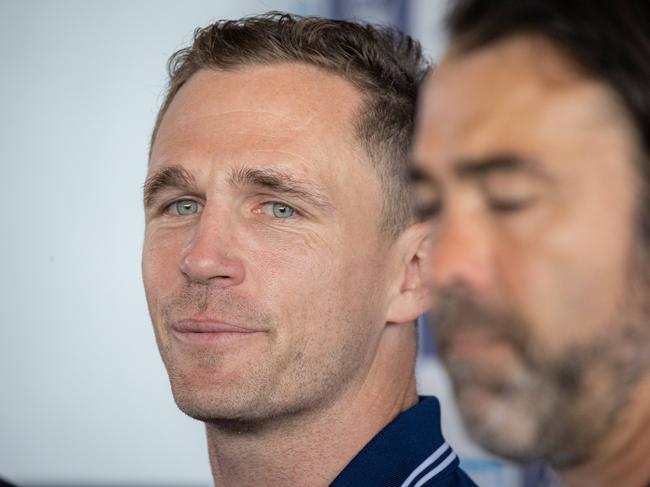
COACHES “OVERLOOKED” IN THE LEAGUE’S FINANCIAL RECOVERY
The AFL’S coaches are increasingly frustrated at the league’s soft cap pay cut and other job security failures, which have triggered a new wave of alarming mental health concerns.
Senior officials said the game’s coaches have become “disenchanted” with the league and its management of the soft cap which had delivered a significant wage cut since a 37 per cent reduction in 2019.
In an AFL Coaches’ Association survey obtained by the Herald Sun, the league’s coaches have reported dramatic downturns in wellbeing amid key talks with the AFL.
In particular, 42 per cent of coaches said their mental health was either average, poor or quite poor, while only 33 per cent of coaches said they could continue their current workload.
The considerable soft cap pay cuts for coaches is in contrast to the increase in players’ salary cap and pay rise for AFL executive in last year’s financial results, which saw the AFL turn a $40.1 million loss in 2021 to a $20.7 million profit in 2022.
AFL CA chief executive Alistair Nicholson said it had become clear the coaches had been “overlooked” in the league’s financial recovery.
Nicholson said the Coaches Association had developed a four-point plan to improve coaches’ conditions including soft cap reform, extra marketing allowances, longer termination clauses, and transition fund for coaches exiting the industry.

He said the AFL’s $250,000 increase to the football department soft cap for next year was clearly “not enough.”
“This group really has been left behind post Covid-19 and the game right now is in rude health, and well done to everyone who has led that,” Nicholson said.
“But you look at the reduction in the soft cap and the reality is that most people are earning a lot less than they did in 2019, and that is not factoring in CPI.
“Plus there’s all the data that we have got following a lot of conversation with the coaches and there is that strong sense of ‘Why isn’t this group bouncing back, too’, just like other sectors in the industry?
“So there’s no doubt we are concerned by the data around wellbeing and mental health because the coaches play a really important role – not only at their own clubs but more broadly across the whole game.
“So we want it to be attractive and healthy as a profession, but the evidence suggests there are some growing concerns there, so it really is time to grab this and prioritise it.”
The soft cap will increase to $7.2 million in 2024 (minus $500,000 in other allowances), but there is a strong push to return to the 2018 salary levels to “reward the coaches for their importance in the game”.
And the addition of the ‘Gather Round’ – which has added nine extra packed-out games to the AFL fixture – will be targeted as a way to redirect more funds to coaches.
“The coaches create great value for the game whether it is helping drive the huge media engine or getting the best out of their playing group,” he said.
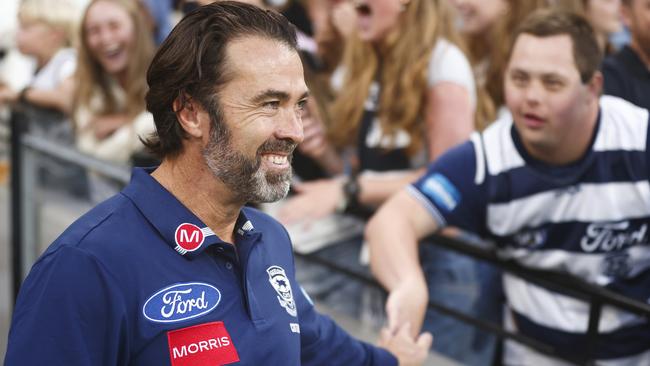
“When you consider the pressures, the stress, the time and travel demands, it really is a group that needs to move up the priority order and now is the time to do it.”
As part of the proposed reform, the Coaches Association will explore extra marketing allowances or independent agreements which could see top-line coaches such as Damien Hardwick or Chris Scott get paid outside the soft cap for certain promotions or programs.
Nicholson said there was also increasing anxiety around the large number of coaches who have only one-month termination clauses despite, in some cases, moving their families’ interstate, or living away from them.
Many senior coaches have only six-month termination clauses.
Nicholson said Brett Ratten’s sacking from St Kilda last year was distressing for the entire coaching group.
“It sent an absolute shiver through the coaching group from individual conversations which we had – to people going and checking their own contract,” he said.
“For senior coaches there needs to be some sort of phasing (payout) or some type or protection because it is all in too much in favour of the club.”
More Coverage
Originally published as Pay cuts, stress levels and ruthless sackings triggering an alarming increase in mental health concerns for AFL coaches





